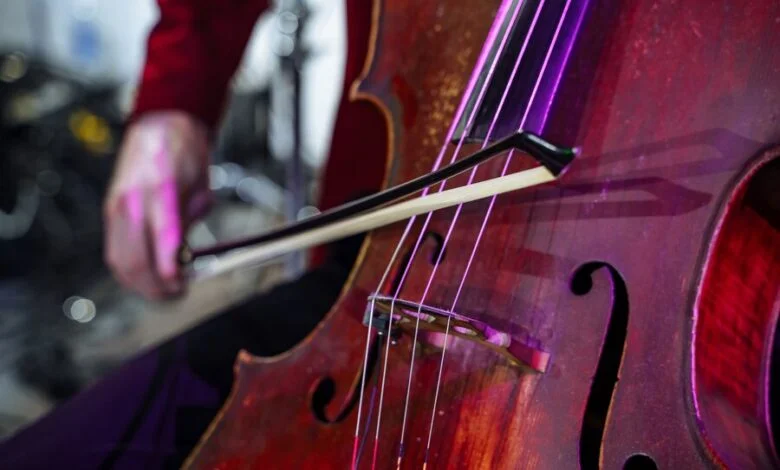Introduction to Matz Cello Quartet In d Minor Atlanta Symphony Orchestra
There’s something magical about the sound of cellos blending together in harmony. When you think of classical music, it often conjures images of grand orchestras and sweeping symphonies. But there’s a unique intimacy that comes with smaller ensembles, particularly when it involves the Matz Cello Quartet In d Minor Atlanta Symphony Orchestra performing in d minor alongside the Atlanta Symphony Orchestra. This collaboration promises not just an auditory experience but a profound emotional journey that resonates deeply with its audience.
Imagine sitting in a dimly lit concert hall as the rich tones of four cellos fill the air, each note tugging at your heartstrings. The atmosphere crackles with anticipation as skilled musicians breathe life into classic compositions, inviting listeners to feel every rise and fall within their melodies. Whether you’re a lifelong fan or new to classical music, this performance is sure to leave an indelible mark on your soul. Join us as we explore what makes this event unforgettable!
The history of the cello quartet and its rise in popularity
The cello quartet has a rich and intriguing history. Originating in the late 18th century, this ensemble format gained traction as composers began to explore string instruments’ harmonic possibilities.
Initially, quartets primarily featured violins and violas. However, cellists soon demanded their place at the forefront of musical expression. The warm tones of the cello added depth and richness that captivated audiences.
As classical music evolved through various periods, so did the cello quartet’s repertoire. Composers like Haydn and Boccherini pushed boundaries, creating pieces specifically for this arrangement.
In recent decades, interest surged thanks to innovative performances and collaborations with contemporary artists. Festivals showcasing these ensembles have flourished globally.
Today’s listeners appreciate not just technical skill but also emotional storytelling within each performance—transforming how we experience classical music altogether.
The emotional impact of classical music on audiences
Classical music has a unique ability to stir deep emotions within listeners. Its intricate melodies and harmonies can evoke feelings of joy, sorrow, nostalgia, or even tranquility. Each note tells a story that resonates with personal experiences.
The connection between the performer and the audience is palpable during live performances. As musicians pour their hearts into each piece, spectators often find themselves immersed in the moment. This shared experience creates an almost magical atmosphere.
Research has shown that classical music influences our brain chemistry. It releases dopamine—a neurotransmitter linked to pleasure—which amplifies emotional responses.
Whether it’s a powerful crescendo or a gentle lullaby, these compositions can transport us to another world. They remind us of our humanity and foster empathy among diverse audiences who share these musical journeys together.
A breakdown of the pieces performed by the Matz Cello Quartet and Atlanta Symphony Orchestra
The program featured a captivating mix of classical masterpieces and contemporary works. Each piece was carefully selected to showcase the unique strengths of the cello quartet alongside the full orchestra.
One highlight was Dvořák’s “Silent Woods,” which beautifully blended rich harmonies with poignant melodies. The deep resonance of the cellos hinted at longing, perfectly complemented by orchestral swells.
In contrast, Piazzolla’s “Libertango” brought a vibrant energy to the stage. The rhythmic pulse and playful interplay between musicians ignited excitement among audience members.
Additionally, original compositions added depth to the performance. These modern pieces pushed boundaries while maintaining emotional connections, demonstrating how versatile this ensemble truly is.
Every note played created an intricate tapestry of sound that resonated in every corner of Woodruff Arts Center. This event not only showcased talent but also invited listeners into a profound emotional journey through music.
Interviews with members of the quartet and orchestra about their experience performing together
Sitting down with the members of the Matz Cello Quartet, one can feel their palpable excitement. Each musician shared stories about the thrill of collaborating with the Atlanta Symphony Orchestra.
Cellist Sarah Miller spoke passionately about how performing together creates a unique synergy. “Every rehearsal is an adventure,” she said, her eyes lighting up. “We discover new layers in each piece.”
Violist Jack Thompson added depth to this sentiment. He noted that blending different musical backgrounds enriches their performances. “It’s like painting a canvas together,” he explained.
The energy backstage was equally inspiring for orchestral musicians like conductor David Rivers. He emphasized how these collaborations breathe fresh life into classical works and engage audiences on emotional levels.
As they reflected on memorable moments from past concerts, laughter filled the air—evidence of strong bonds formed through music and shared experiences on stage.
The importance of live classical music performances in today’s society
Live classical music performances offer a unique connection that recorded music simply cannot replicate. The atmosphere of a concert hall creates an immersive experience, enveloping the audience in sound.
In today’s fast-paced world, these events provide a moment of pause. They allow listeners to escape daily stresses and engage with profound emotions through art.
Attending live performances fosters community as people unite over shared experiences. It breaks down barriers, bringing diverse audiences together for one purpose: to appreciate the beauty of music.
Moreover, witnessing talented musicians in action inspires aspiring artists and nurtures appreciation for the craft. This live interaction breathes life into compositions, making each performance distinct and memorable.
In essence, the value of attending these concerts transcends entertainment; it enriches lives by cultivating cultural awareness and emotional depth within society.
Conclusion
The Matz Cello Quartet in D Minor alongside the Atlanta Symphony Orchestra is more than just a performance; it’s an experience that resonates deeply with audiences.
Each note played tells a story, evoking memories and emotions often left unspoken. The synergy between the quartet and orchestra creates a rich tapestry of sound that enchants everyone present.
Live music has an unparalleled ability to connect people, making every concert a unique event filled with shared moments. As we celebrate this collaboration, we recognize its role in enriching our cultural landscape.
Artistic expression through classical music continues to thrive, bringing communities together in harmony. The journey of discovery through each piece performed ensures that these experiences linger long after the final bow is taken.
FAQs
Q: What is the Matz Cello Quartet in d Minor?
A: The Matz Cello Quartet in d Minor is a captivating piece that showcases the depth and richness of cello music. Performed by talented musicians from the Atlanta Symphony Orchestra, it brings together intricate harmonies and emotional melodies.
Q: Why has the cello quartet gained popularity?
A: The cello quartet format allows for a unique blend of voices within classical music. Its ability to convey deep emotions resonates with audiences, making performances not just enjoyable but also profoundly moving.
Q: How does classical music impact listeners emotionally?
A: Classical music often evokes strong feelings. The combination of melody, harmony, and dynamics can transport listeners through various emotional landscapes—from joy to sorrow—creating an unforgettable experience.
Q: What pieces did the Matz Cello Quartet perform at their recent concert?
A: During their recent performance with the Atlanta Symphony Orchestra, they explored several compelling works. Each piece offered its own story and showcased diverse styles while maintaining a cohesive narrative throughout.
Q: Can you share any insights from members of the quartet or orchestra about performing together?
A: Musicians expressed how collaborative efforts lead to synergy on stage. They highlighted moments where improvisation added spontaneity to familiar compositions, enriching both their experience and that of the audience.
Q: Why are live classical performances important today?
A: Live performances foster connections between artists and audiences that recordings cannot replicate. They provide shared experiences filled with energy and emotion—a necessity in our increasingly digital world.
Q: Is there anything else I should know about attending future concerts featuring this ensemble?
A: Attending live performances offers an opportunity to immerse yourself fully in orchestral soundscapes. Keep an eye out for upcoming events featuring the Matz Cello Quartet; these experiences promise inspiration for both seasoned classical lovers and newcomers alike.

















